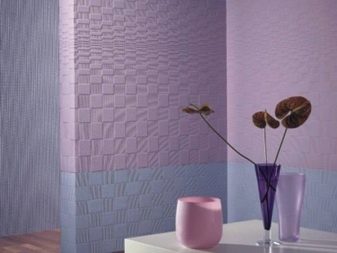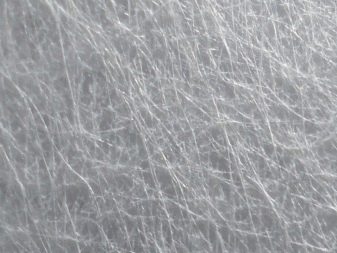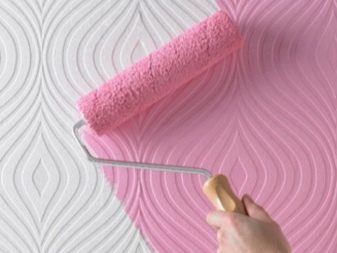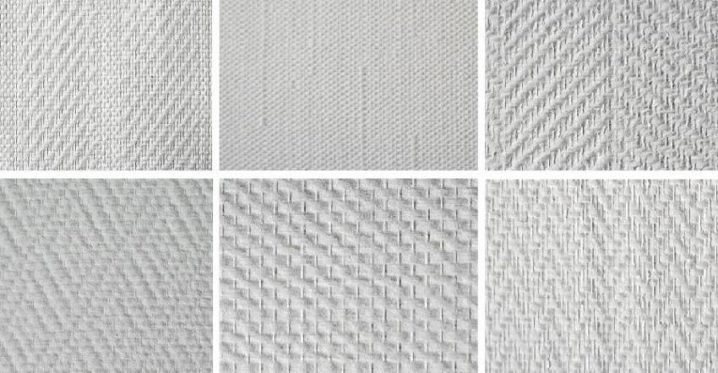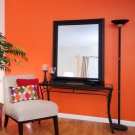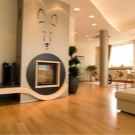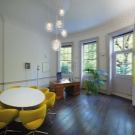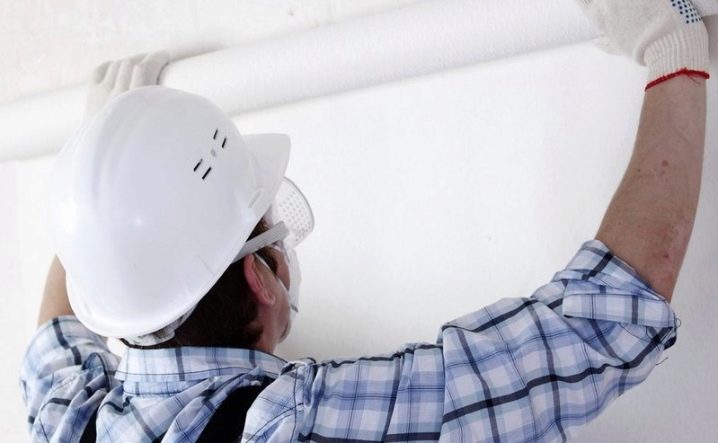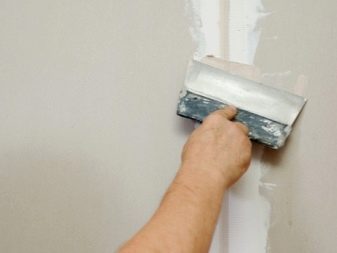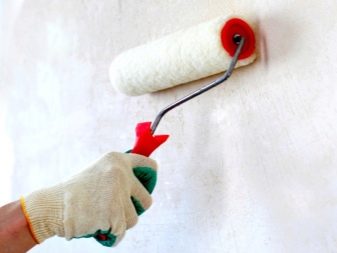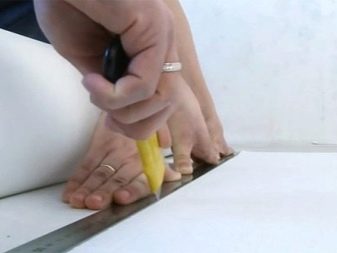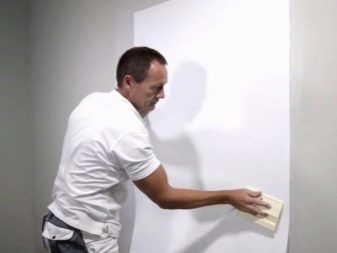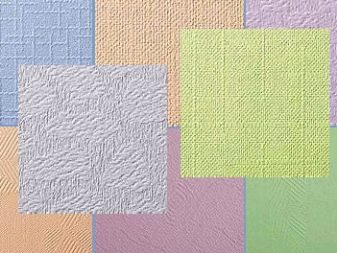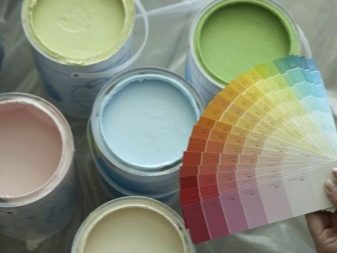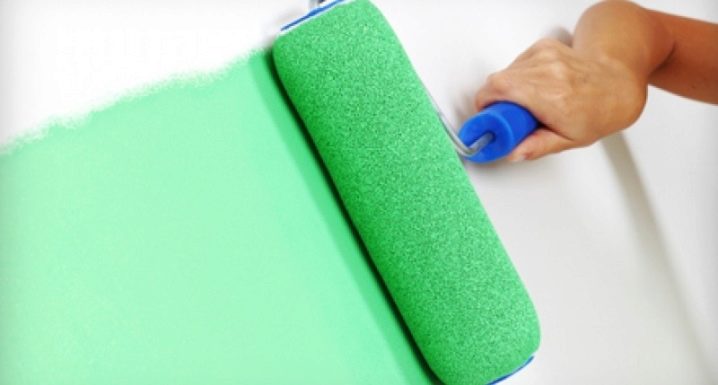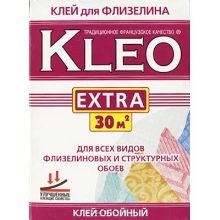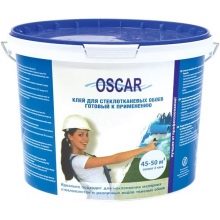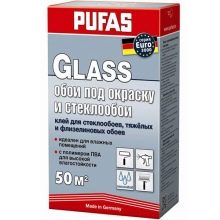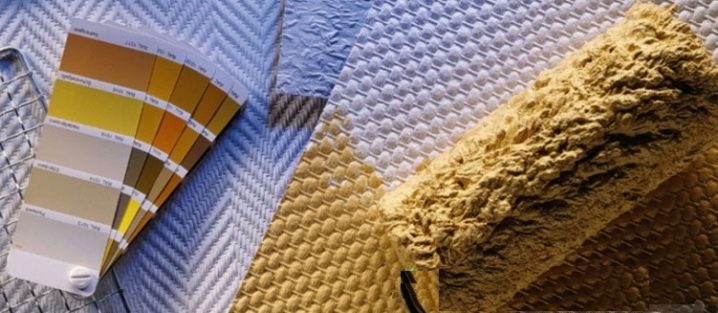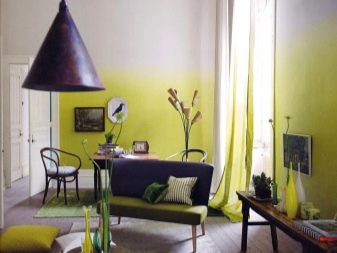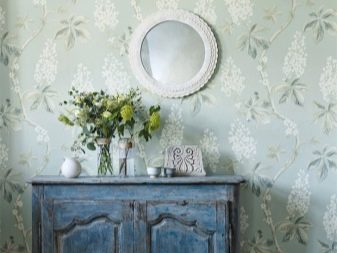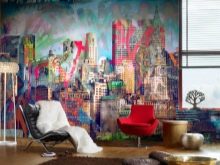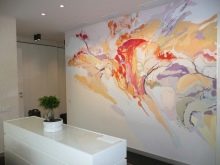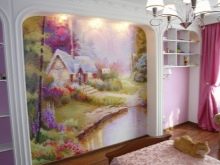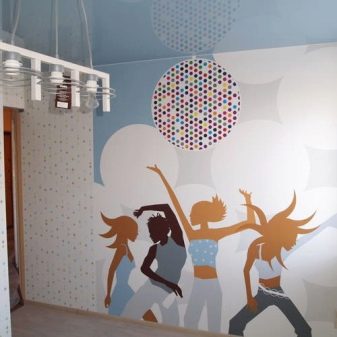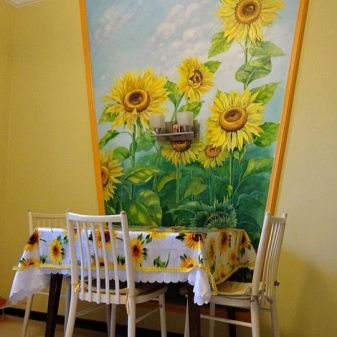Fiberglass for painting: pros and cons
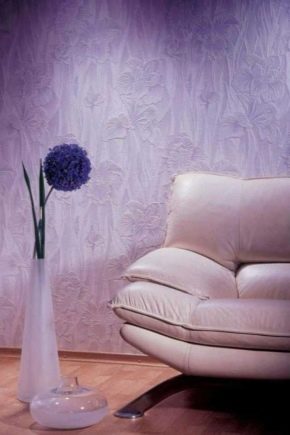
When carrying out finishing works, great importance is attached to each material involved in the finishing. Current trends dictate their own rules that extend to a high level of cladding. Let's pay attention to fiberglass for painting: today this material is in great demand among professional craftsmen. Consider its features, pros and cons, methods of work and recommendations of experts.
Special features
Fiberglass is nothing like the building material of the new generation, which prepares the surface of the base for finishing. This is not a glass wall, as those who are unfamiliar with this material mistakenly believe.This raw material is in the form of a web, which is sold in rolls 50 m long with a meter width. In the construction market, he appeared relatively recently. However, the quality of the material allows something that was previously difficult to do when finishing.
The invoice of fiberglass represents nonwoven fabric. It consists of the finest fiberglass filaments that are pressed. Externally, fiberglass is thin and transparent. In a roll, the color of the cobweb appears white. When considering this thread, webs, interconnected in a chaotic manner with the help of adhesive substances based on organic resins.
The raw material for the production of fiberglass is quartz sand. The density of the preparatory material for painting can vary from 25 to 50 g / m2. It matters at the choice of raw materials for the different planes. Usually for vertical surfaces used species with lower density. For walls you need one that is denser. With increasing density, the mass of fiberglass becomes larger.
Scope of application
The scope of application of this material is extensive. Its use allows you to get rid of visual irregularities and obvious base defects without global preparatory work. Its function is reinforcement.This is non-decorative material: after it is fixed to the base, it is plastered, and then the surface is painted or pasted over with wallpaper.
Fiberglass for painting applied on different grounds (from concrete to plastered and plasterboard). Due to the high quality and performance characteristics, it can be used in different purpose rooms. Type of premises can be residential or utility. Often this material is used in preparing the base of bedrooms, living rooms, classrooms, home libraries, bathrooms, hallways, corridors.
The popularity of fiberglass for painting due to the prevention of cracks. The plane, finished with paint after the reinforcement of the cobweb, will retain the attractiveness of the appearance for many years. You do not have to mask the cracks, tinting them with fresh paint.
In addition, fiberglass for painting can be used in the construction industry for:
- increase the service life of metal pipes;
- manufacturing floor cladding and wall panels;
- waterproofing facilities;
- perform drainage devices;
- cooking mastic used to create the roof.
Advantages and disadvantages
Like any building material, fiberglass has advantages and disadvantages.
Note the benefits.
- It is resistant to temperature changes. You can carry out the preparation of the plane for painting when the mode is from -40 to +60 degrees. The quality of the preparation of the base is not reflected.
- Fiberglass is breathable and hygienic. Its use eliminates the formation of condensate and the environment for the appearance of fungus, as well as mold.
- The material is not electrified, as it is antistatic. For this reason, it does not accumulate dust.
- The use of the material does not have a negative impact on the health of the household. This is due to the environmental performance of fiberglass.
- It is hypoallergenic. This nuance is especially important for allergies.
- Fire resistance is one of the most significant advantages. Such material is appreciated by every experienced master.
- The price of fiberglass is available to every customer, which allows you to make repairs inexpensive and of high quality. It can be bought in hardware stores.
- Fiberglass has a high wear resistance. It does not deteriorate over time, so you do not have to do repairs often.
- This material can be painted.Its uniqueness is the fact that painting can be repeated.
After examining the positive characteristics, we note the shortcomings, because they are not so harmless.
It is necessary to work with fiberglass extremely carefully. This is due to the fact that in the process of leveling the base from the canvas can break off small glass fragments. Sticking into the skin, they can cause significant harm to health, getting on the skin of the hands, body, sometimes in the eyes and respiratory organs. In some cases, itching is possible, if it comes in contact with the eyes, you will have to consult a doctor.
Working with fiberglass requires the use of closed clothing. You should wear gloves on your hands, a respirator and goggles on your face.
How to stick?
Consider the subtleties of using fiberglass for painting. This will allow you to become better acquainted with the material and understand the features of its application. Initially, we create optimal conditions for work. It is better to hold them at a temperature of +18 to +25 degrees. Windows during the preparatory work should be closed. Drafts are excluded, it is necessary to ensure that the fiberglass does not lie under the sun.
Follow the small instructions.
- Inspect the surface of the base. If it has significant defects (gouges, large chips), set aside the glass fiber. In this case, you first need to get rid of visible flaws with a putty or plaster mixture.
- After that, it is necessary to treat the base with a special primer composition. It is advisable to use a primer with high penetrating power. It will align the structure of the surface, bind the dust, fill the microcracks.
- After applying the primer, let it dry. In the process of drying the material on the surface of a fine crystalline lattice, which contributes to high adhesion. If you do not wait until the end of drying, the lattice film will be broken.
- Fiberglass is not fixed with a whole cloth. It must be cut into strips of this size so that you can work comfortably. At the same time add a small margin allowance (1 to 2 cm is enough).
- Prepare glue for fiberglass. Apply it on the back side and width. Spread the adhesive evenly in a thin layer (no more than 1 mm).
- Start work from the corner of the plane. It can be a ceiling or a wall.After gluing the first strip, the second one is attached next, and so is everyone else. At the same time they form a small overlap, which, after final fixation, should be trimmed.
- To the joints of fiberglass strips do not diverge, it is necessary to additionally impregnate them with glue, especially carefully pressing them with a spatula. Experts emphasize the importance of this stage.
Now leave the base for 2 days to dry. Then putty, then correct it with a sandpaper to make it smooth. Treat the surface with a primer before painting and allow it to dry.
How to paint?
After the surface is prepared, you can start painting. So that it does not deliver a hassle, it is important to choose the right coloring composition, the types of which today exist quite a lot.
You can choose paint:
- water emulsion;
- acrylic;
- silicone;
- latex.
A distinctive feature of this painting is the need to apply several layers. It is impossible to apply two layers at once: it will fasten or peel off in a rather short time, exposing the bases with putty. Failure to use the technology of coloring compositions is fraught with a reduction in the life of the paint.In this case, it is unlikely that you will be able to paint such a surface several times.
In order to apply quality paint, it is important to choose the right tool. The brush in this case is only suitable for painting joints and corners. The use of a roller will be more appropriate. It will speed up the time for painting, will allow you to put a thin layer, which will reduce the consumption of the coloring composition.
Dip the roller in a container of paint, squeeze a little and roll on the plane. Do not use a tool with a foam coat: the foam will begin to crumble into pieces. Need an analog with nap. The movements should be in different directions: this will allow the paint to lie better and more evenly. Do not forget that the plane before painting must be puttyed and primed. When painting you can apply two or three layers of the composition.
Tips
To prepare the surface for painting with fiberglass was high quality, refer to the recommendations of professionals in the field of construction and decoration.
- After you have glued the cobweb to the surface, strengthen its fixation. To do this, dilute the glue to a liquid consistency and spread it over the top. He must soak fiberglass.
- Do not ignore the starting works, if they are really necessary. If you do not have enough experience, you can invite a specialist who will help prepare the foundation.
- Perform work efficiently and without haste. From that, how strongly you will glue fiberglass, the strength and reliability of all basis will depend.
- As an adhesive, you can use glue that glued glass wall. The composition of such mixtures contains special inclusions that prevent the formation of fungus. If in doubt about the choice, ask the seller: not every glue for wallpaper is appropriate here.
- Choosing a dry glue, dilute it properly. Pay attention to the harmless compositions Bostik, Wellton, Oscar, Pufas: they have positive reviews of buyers and professionals in the field of construction.
- If you need a glossy type of surface, buy latex paint.
Reviews
According to reviews, fiberglass is called modern material for modern people who care about their health. Due to it, the walls look better, more aesthetically attractive, - comments left on construction forums are noted. They reinforce the plaster.
Those who chose paint to decorate surfaces, write: for a perfect finish, it is important to use a roller with an average pile length. At the same time, it is necessary to moisten the tool in the paint abundantly, soaking each area of the treated plane with it.
Beautiful examples
In conclusion, we turn to examples of finishing work performed using fiberglass. They clearly show the possibility of decorating different rooms of the interior.
- Painted walls look stylish. The transition of shades brings newness and freshness to the interior.
- The use of wallpaper after surface reinforcement allows you to convey the uniqueness of the texture. The wall is perfectly lined.
- Thin wallpapers are glued to the finished surface flawlessly. Due to the additional layer of putty base differs evenness.
- Decorating the surface with acrylic paints allows you to add abstract strokes to your interior design.
- The possibilities for decorating walls are unlimited. If art skills allow, you can perform art painting over fiberglass and putty. No type of wallpaper with such a decoration of the children's room can not be compared.
- The theme of glamor in the form of a stylized pattern is also appropriate.Through the acrylic paint transferred to the desired mood of the interior.
- Stylish and cheerful solution to emphasize the dining area. The use of acrylic paint brings optimism into the interior.
On how to self glue fiberglass for painting, see the following video.

